#TakeCharge with #Aimshala
How make a career in Fashion Designer
A career as a Fashion Designer offers a vibrant opportunity to express creativity while influencing trends in the fashion industry. To embark on this career path, individuals typically need a strong academic background in fashion design, textiles, or a related field. Pursuing a bachelor's degree in fashion design or merchandising is essential, followed by potential specialization through master's programs. Gaining practical experience through internships, fashion shows, or working in design studios enhances employability. Networking with industry professionals and staying updated with the latest fashion trends and technologies are also crucial. With a blend of education, experience, and passion for fashion, one can build a rewarding career dedicated to shaping the world of style.
Career in Fashion Designer
What are the roles and responsibilities in Fashion Designer?
- Designing Clothing : Fashion Designers create original clothing, accessories, and footwear, considering aesthetics, functionality, and market trends.
- Sketching and Prototyping : They sketch designs and create prototypes to visualize the final product and make necessary adjustments before production.
- Researching Trends : Fashion Designers conduct market research to stay updated with current trends, consumer preferences, and competitor offerings.
- Collaborating with Teams : They work with teams including pattern makers, seamstresses, and marketers to bring designs to life and ensure quality production.
- Attending Fashion Shows : Many Fashion Designers showcase their collections at fashion shows and events, gaining exposure and networking opportunities.
What education is required to study Fashion Designer
Check out the dates of the total number of candidates who have appeared in the CUET 2022 exam from the below table.
Stream |
Graduation |
After Graduation |
After Post Graduation |
|
|
Path 1 |
Completion of high school with a focus on art and design subjects. |
Bachelor of Fine Arts in Fashion Design or related fields. |
Master's degree in Fashion Design or specialized fields such as Textile Design or Fashion Marketing. |
Certifications in specific fashion design software or techniques. |
|
Path 2 |
Completion of high school with emphasis on arts or vocational training in fashion. |
Bachelor's degree in Fashion Merchandising or Textile Studies. |
Master's degree in Fashion Business or related fields. |
Internships or apprenticeships with established designers or fashion houses. |

Feeling unsure about
your future?
Let's find the perfect career path for you!
with AI-powered career
guidance

What are the key skills required for Fashion Designer
- Creativity - Essential for generating unique design ideas and concepts that stand out in the fashion industry.
- Technical Skills - Proficiency in sewing, pattern making, and knowledge of textiles is crucial for translating designs into wearable garments.
- Trend Awareness - The ability to understand and anticipate fashion trends is vital for staying relevant and appealing to consumers.
- Communication Skills - Effective communication is important for collaborating with teams and presenting designs to clients and stakeholders.
- Project Management Skills - Managing timelines, budgets, and production schedules is key to successfully launching a fashion line.
What are the career opportunities in Fashion Designer?
- Fashion Merchandiser - Fashion Merchandisers analyze market trends and consumer behavior to develop strategies that maximize sales and brand visibility.
- Textile Designer - Textile Designers create fabric patterns and designs, focusing on color, texture, and functionality for various applications.
- Fashion Stylist - Fashion Stylists curate clothing and accessories for photoshoots, fashion shows, and personal clients to create appealing looks.
- Costume Designer - Costume Designers create outfits for film, theater, and television, ensuring that costumes align with character development and story.
- Fashion Illustrator - Fashion Illustrators create visual representations of clothing designs, often used for marketing and promotional purposes.
What is the salary and demand for Fashion Designer?
- Salary Overview - The typical salary for Fashion Designers ranges from $40,000 for entry-level positions to over $100,000 for experienced professionals, with variations based on education and location.
- Regional Salary Variations - Salaries can vary significantly by region; for example, Fashion Designers in major metropolitan areas may earn more than those in smaller cities.
- Current Job Market Demand - The demand for Fashion Designers is stable due to the continuous evolution of fashion trends and consumer preferences.
- Future Demand Projections - Future demand for Fashion Designers is expected to rise with the growth of the e-commerce sector and the increasing importance of sustainable fashion.
Leading companies for careers in Fashion Designer

Chanel

Gucci

Prada

Louis Vuitton

Zara

H&M

Nike

Adidas
What are the best colleges for Fashion Designer in India?
Undergraduate
College |
Location |
Website |
|
National Institute of Fashion Technology |
New Delhi |
https://www.nift.ac.in |
|
Pearl Academy |
Jaipur |
https://www.pearlacademy.com |
|
Symbiosis Institute of Design |
Pune |
https://www.sid.edu.in |
|
LISAA School of Design |
Bengaluru |
https://www.lisaa.com |
|
MIT Institute of Design |
Pune |
https://www.mitid.edu.in |
Postgraduate
College |
Location |
Website |
|
National Institute of Fashion Technology |
New Delhi |
https://www.nift.ac.in |
|
Pearl Academy |
Jaipur |
https://www.pearlacademy.com |
|
National Institute of Design |
Ahmedabad |
https://www.nid.edu |
|
Symbiosis Institute of Design |
Pune |
https://www.sid.edu.in |
|
WLCI College |
Mumbai |
https://www.wlci.in |
What are the best colleges for Fashion Designer in Abroad?
College |
Location |
Website |
|
Fashion Institute of Technology |
New York, USA |
https://www.fitnyc.edu |
|
Central Saint Martins |
London, UK |
https://www.arts.ac.uk/colleges/central-saint-martins |
|
Parsons School of Design |
New York, USA |
https://www.newschool.edu/parsons |
|
London College of Fashion |
London, UK |
https://www.arts.ac.uk/colleges/london-college-of-fashion |
|
Istituto Marangoni |
Milan, Italy |
https://www.istitutomarangoni.com |
What are the top entrance exams in India for pursuing a career in Fashion Designer
College |
Tentative Date |
UG/PG |
Important Elements |
Website |
|
National Institute of Fashion Technology |
January |
Undergraduate |
Creative Ability Test, General Knowledge, and English. |
https://www.nift.ac.in |
|
Pearl Academy |
March |
Undergraduate |
Design Aptitude Test, General Knowledge, and English. |
https://www.pearlacademy.com |
|
National Institute of Design |
February |
Undergraduate |
Design Aptitude Test and General Knowledge. |
https://www.nid.edu |
|
Symbiosis Institute of Design |
April |
Undergraduate |
Design Aptitude Test and Portfolio Review. |
https://www.sid.edu.in |
|
WLCI College |
May |
Undergraduate |
Creative Aptitude Test and General Knowledge. |
https://www.wlci.in |
Pros & Cons of a Career in Fashion Designer
Pros
- Fashion Designers have the opportunity to express their creativity and influence trends in a dynamic industry.
- The field offers diverse career paths, from design to merchandising and marketing.
- Professionals in this field can achieve significant recognition and success through innovative designs and collections.
- The career allows for continuous learning and adaptation to new trends and technologies.
Cons
- The fashion industry can be highly competitive, requiring constant innovation and resilience.
- Some roles may involve long hours, especially leading up to fashion shows or product launches.
- Job security can be uncertain due to the fluctuating nature of fashion trends and consumer preferences.
- The work can be stressful, particularly when meeting tight deadlines or managing multiple projects.
Did you find this information helpful?


Report
0 out of 0 found this helpful


